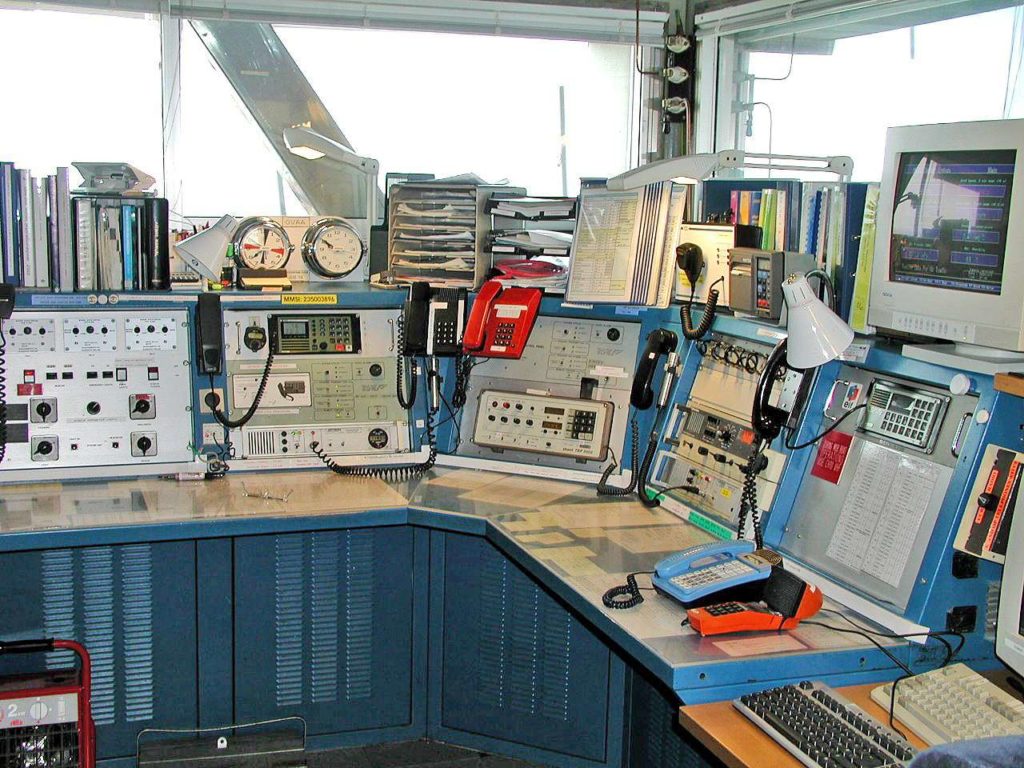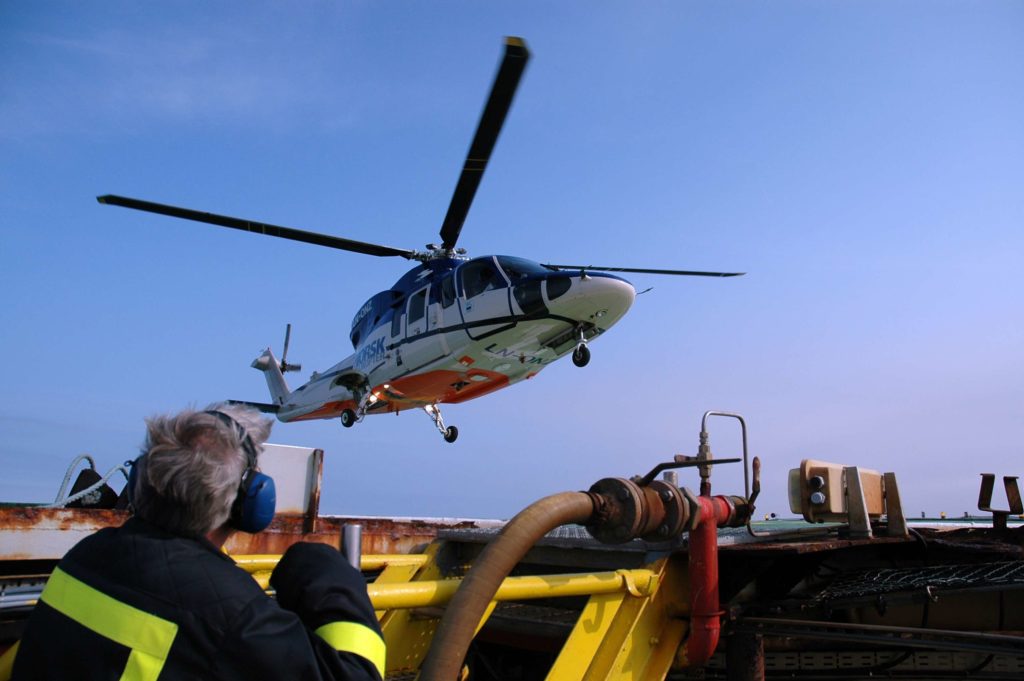Communication

Radio operators
The operators in the radio shack at the top level on QP were in charge of the communication systems. Their principal job was to maintain contact between the field and land, other installations and the helicopters. All external communication from Frigg was coordinated via the QP radio shack. Dusavik also had a radio room which handled communication with the field. A tropospheric (troposcatter) radio system was used to communicate with MCP-01 and St Fergus. Troposcatter provides wireless communication over distances greater than line of sight. Signals are bounced off the troposphere, the lowest level of the atmosphere, and picked up by a receiver on the ground. This made it possible to establish dedicated lines right out of the Frigg platforms.
Communication between Norway and Frigg utilised the Norsat satellite system, which became operational in June 1976. It made Norway the first country in the world to establish satellite communication with offshore production platforms.[REMOVE]Fotnote: Gard Paulsen, Informasjon over Nordsjøen: Teleommunikasjoner på norsk sokkel. Research report no 3, 2005. Norwegian School of Management. The Eik earth station south of Stavanger received the satellite signals.
 Kommunikasjon, drift,
Kommunikasjon, drift,“Communication with land could be difficult in the early days, when we only had a few lines available,” recalls Patrice de Wangen, who worked on Frigg from the 1970s. “After 10 minutes, the pips sounded and you had to hang up. It wasn’t easy establishing contact with the shore, and we became a little isolated. On the floating units, you could only call via Rogaland Radio. The main field did have satellite communication, after all. There were a total of six telephone lines for the three platforms in the central complex. One was dedicated to the field manager for emergencies. Because of the limited number of lines, calling the field was also difficult. We later got phones in all the offices, with open lines.”
Around 1990, the radio shack ceased to be staffed on the night shift. Responsibility for the radio was transferred to the control room operators, and several of them then became certified VHF operators in order to handle radio communication at night.
A key job for the radio operators was to coordinate helicopter traffic, both in-field and to and from land. One operator was responsible for keeping track of where the helicopters were at any given time. They cooperated closely with the marine coordinator, who supervised vessel traffic.
In the mid-1980s, the job of receptionist (rig officer) on QP was merged with the radio operator function. The receptionist dealt with people arriving on Frigg, checking identity cards, issuing emergency cards and allocating cabins. Another part of the job was to provide new arrivals with an introductory briefing. They were then passed over the safety personnel for further training. Bookings were also taken for helicopter flights between the platforms, and shuttle tickets were issued.
Heliguards
 Kommunikasjon, drift,
Kommunikasjon, drift,The heliguards assisted the pilots during landing and take-off. Another responsibility was firefighting. The heliguard stowed baggage before departure, and set out luggage on deck after landing so that passengers could take it with them when they left the helicopter.
Marine coordinator
A marine coordinator handled contact with vessels, and coordinated loading and discharging as well as the positioning of containers after they had been lifted onto a platform. Operation of the field depended on shipping for its supplies. Vessels brought food, fresh water and various other consumables, as well as equipment required to run the platforms. Diesel oil was needed for such units as cranes and generators. Reception of new supplies depended on weather conditions, since everything came from the base on land. Freight had to remain on supply ships until the weather allowed it to be transferred to the platforms.
A standby ship was permanently stationed on the field. In addition to its safety role, this vessel was used for in-field transport between the installations. When work was taking place under a platform, the standby ship would be notified and functioned as a guardpost in case of accidents.
De Wangen reports that, while working as a marine coordinator, he maintained a certain degree of control over such vessels as diving support ships. “They reported to the radio shack on QP if they came within a radius of 500 metres. As marine coordinator, I naturally had to know where they were, but didn’t have anything to do with their work.”
